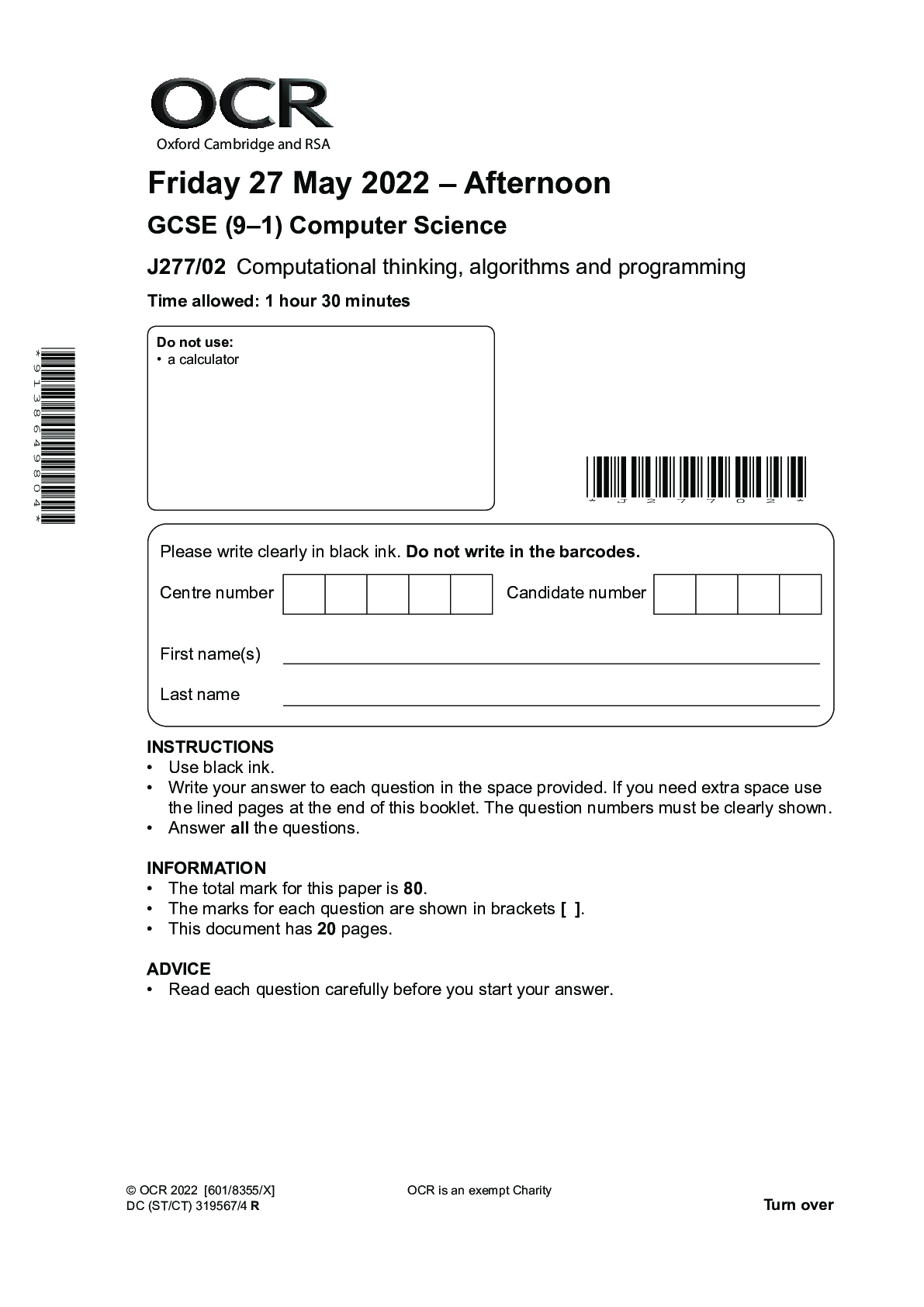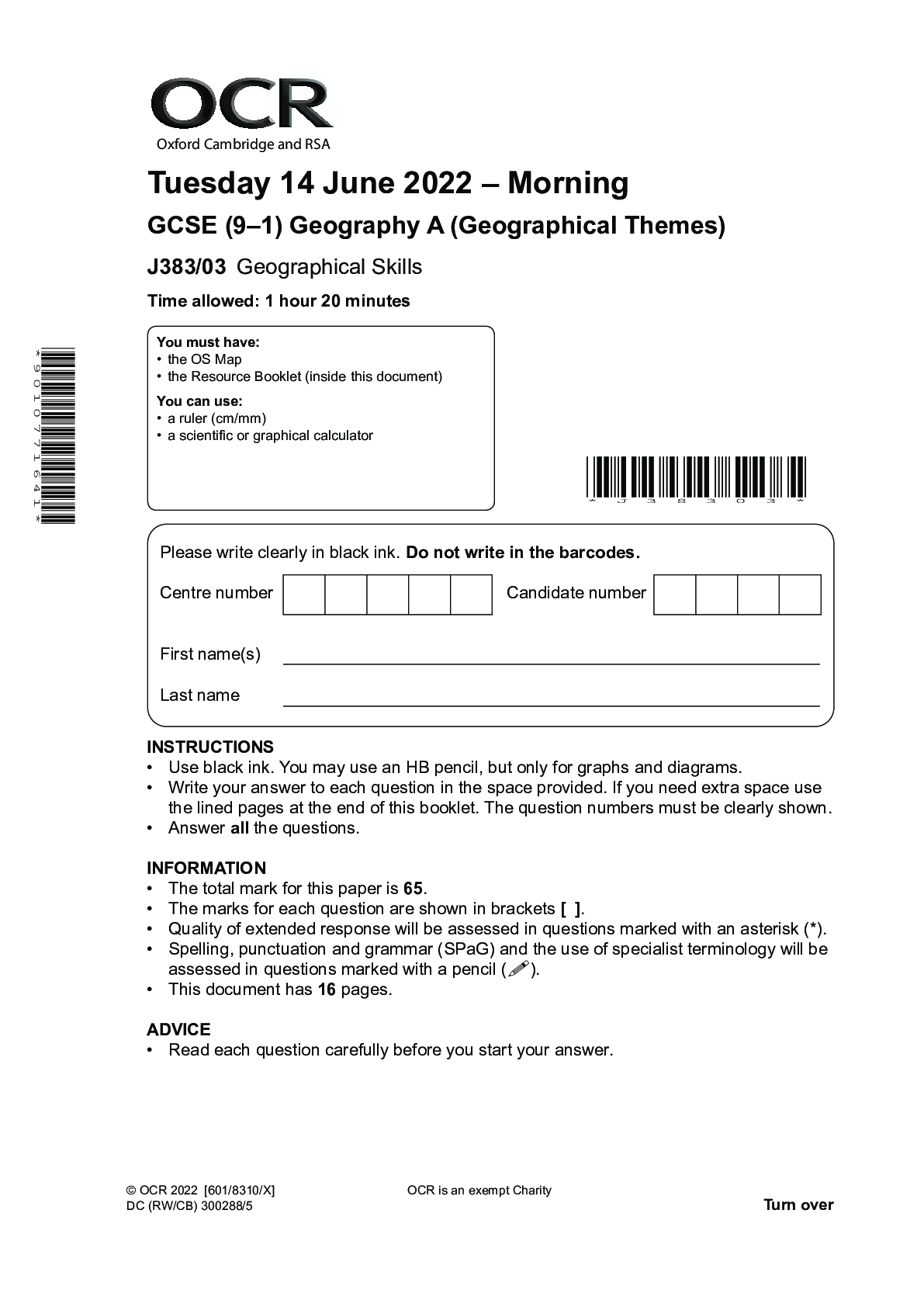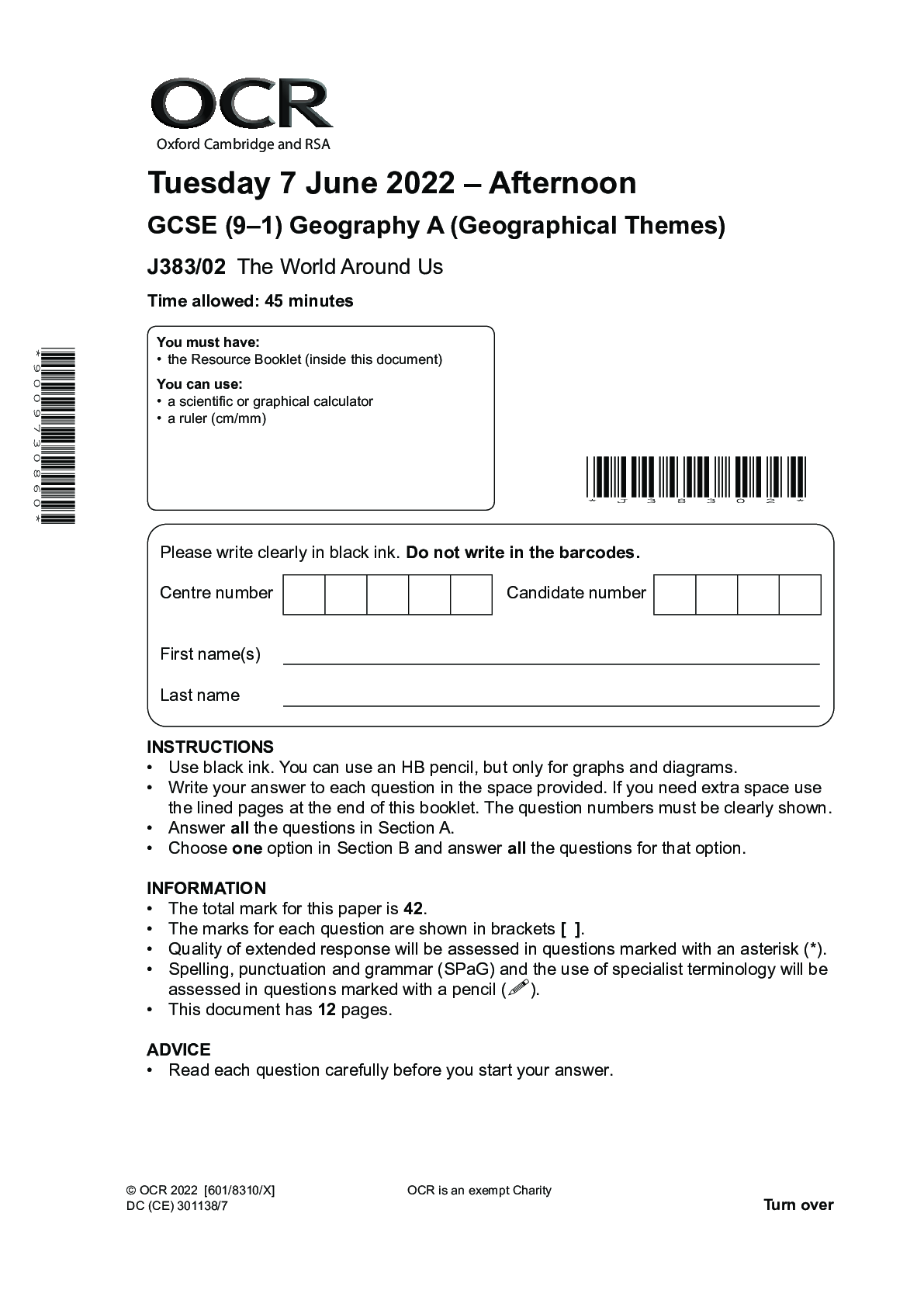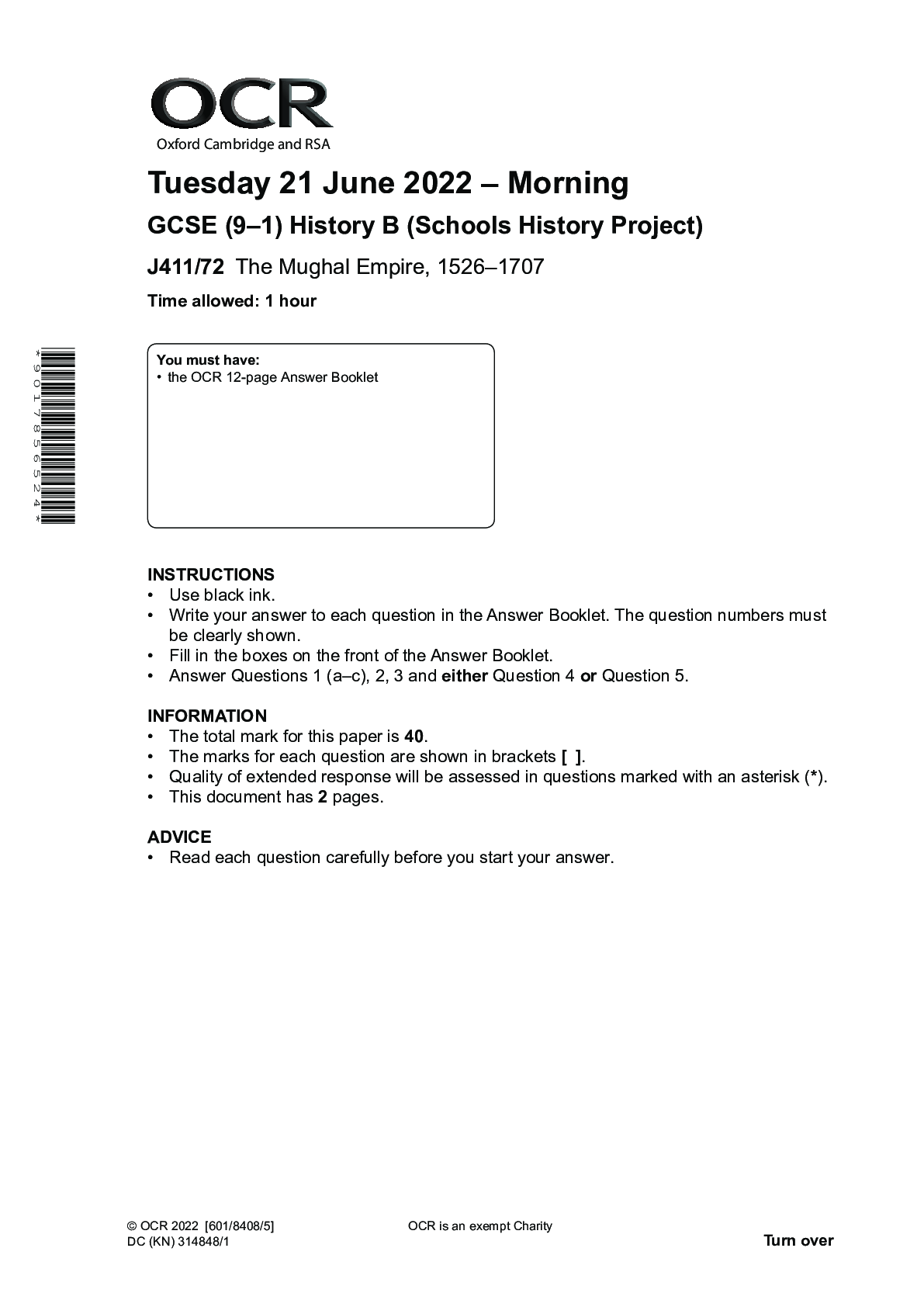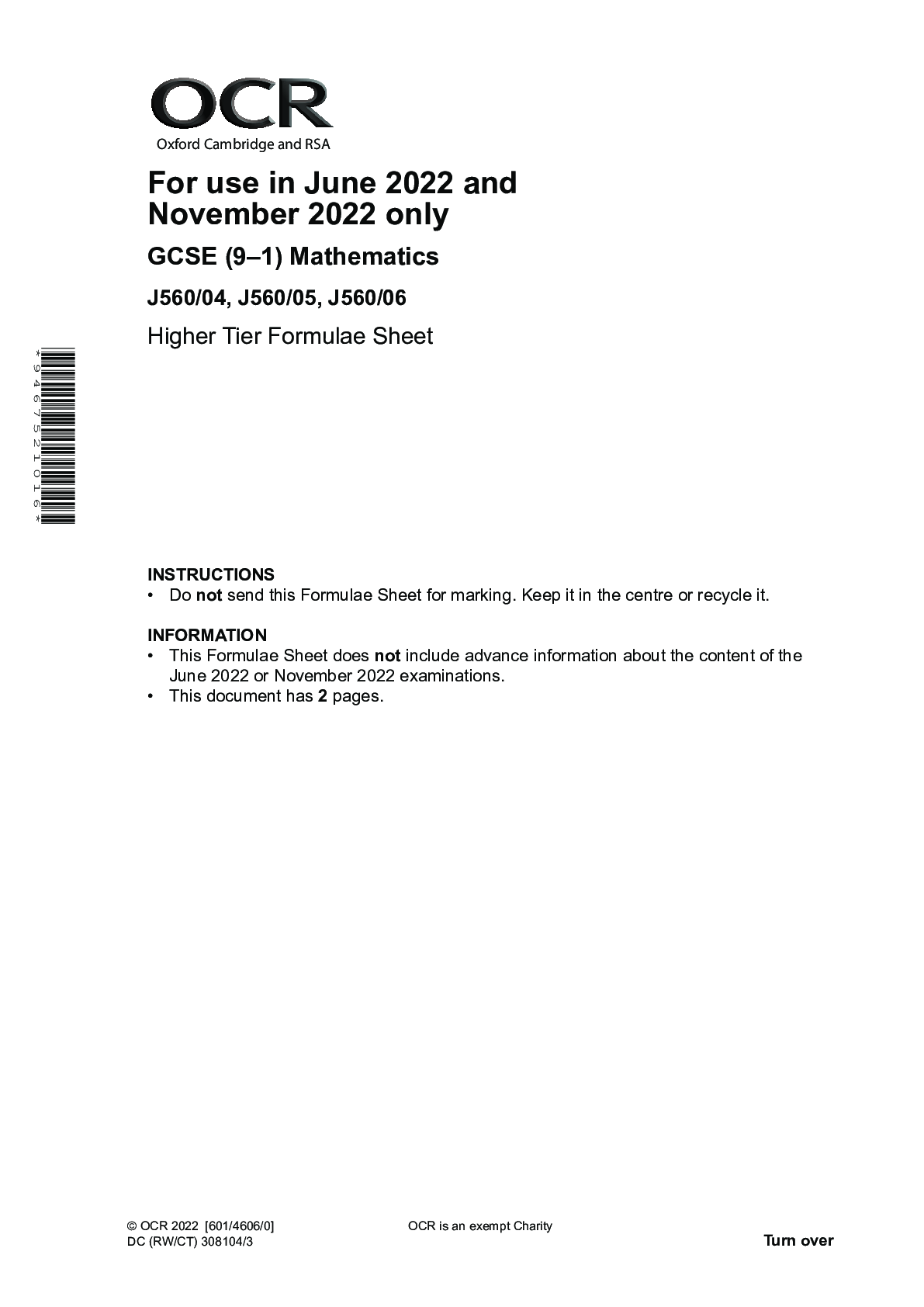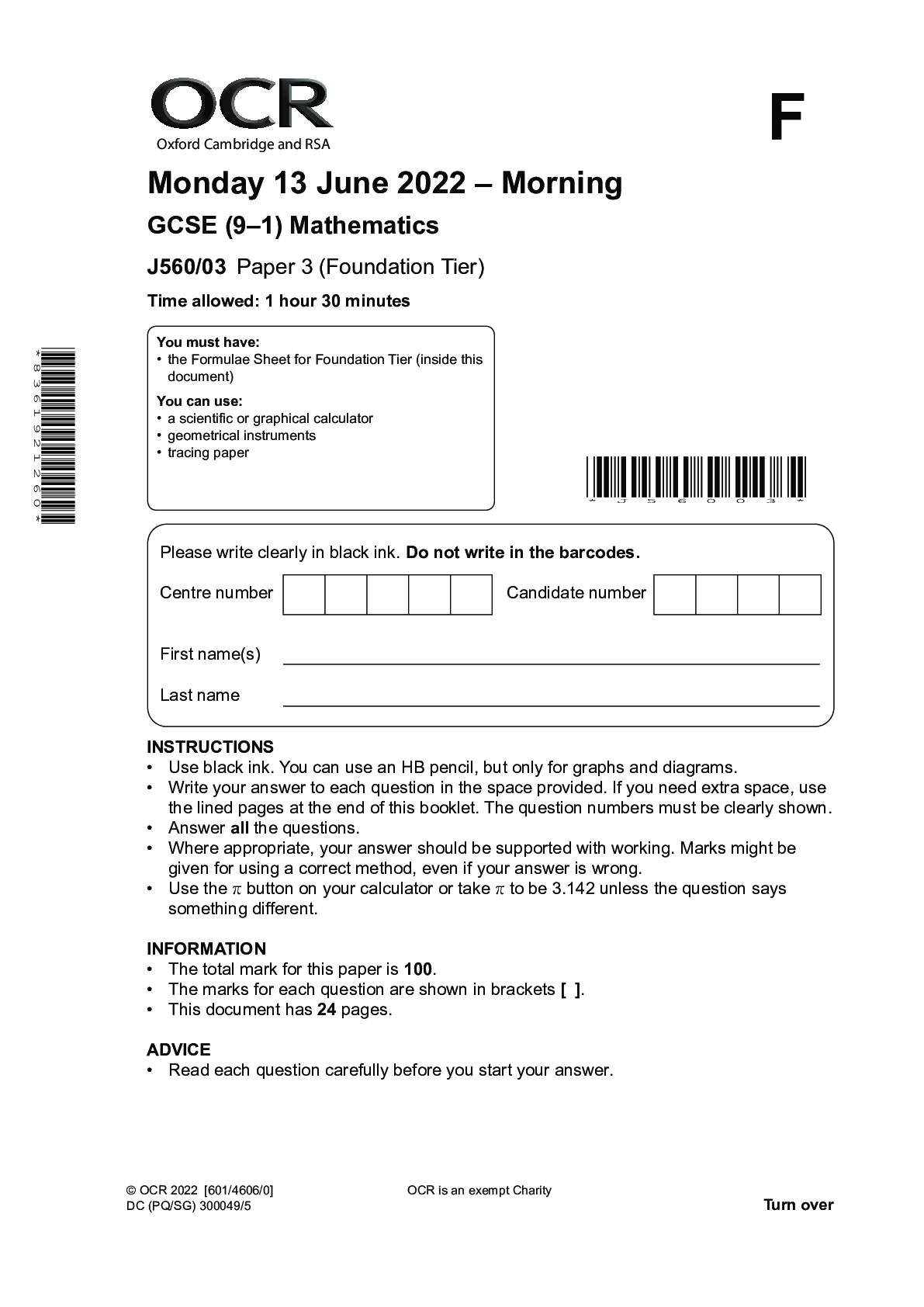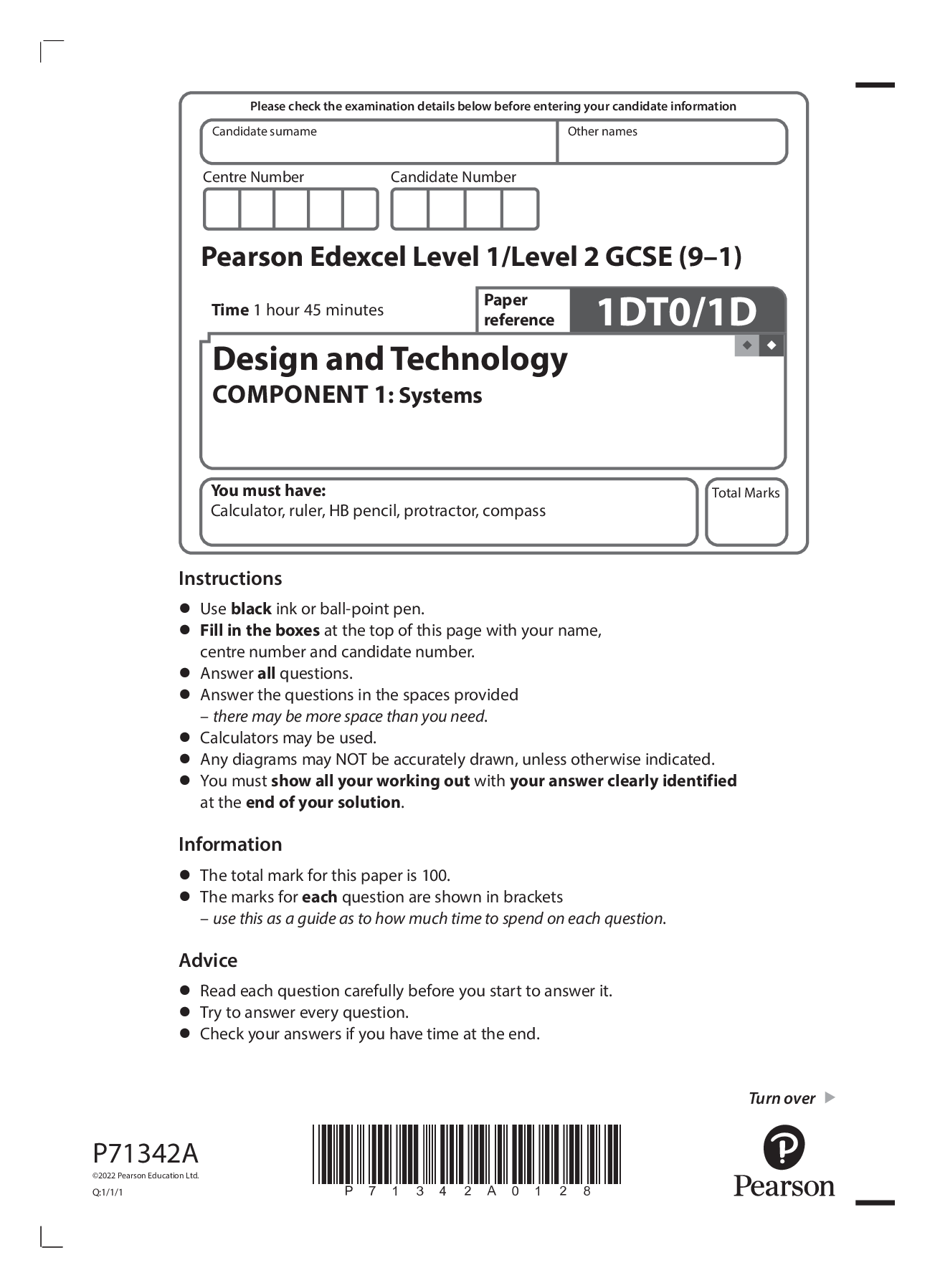Chemistry > QUESTIONS & ANSWERS > AS CHEMISTRY Paper 1 Inorganic and Physical Chemistry 2 *02* IB/M/Jun22/7404/1 (All)
AS CHEMISTRY Paper 1 Inorganic and Physical Chemistry 2 *02* IB/M/Jun22/7404/1
Document Content and Description Below
AS CHEMISTRY Paper 1 Inorganic and Physical Chemistry 2 *02* IB/M/Jun22/7404/1 Do not write outside the Section A box Answer all questions in this section. 0 1 This question is about ionis... ation energies of Group 2 elements. 0 1 . 1 Explain why the first ionisation energy of the Group 2 elements decreases down the group. [2 marks] 0 1 . 2 Give an equation, including state symbols, to represent the process that occurs when the third ionisation energy of magnesium is measured. [1 mark] 0 1 . 3 Explain why the third ionisation energy of magnesium is much higher than the second ionisation energy of magnesium. [2 marks] 5 3 *03* Turn over ► IB/M/Jun22/7404/1 Do not write outside the box 0 2 This question is about acid–base titrations. Citric acid reacts with sodium hydroxide. C6H8O7(aq) + 3NaOH(aq) → Na3C6H5O7(aq) + 3H2O(l) 0 2 . 1 A student makes a solution of citric acid by dissolving some solid citric acid in water. Describe a method to add an accurately known mass of solid to a beaker to make a solution. [2 marks] 0 2 . 2 The student dissolves 0.834 g of citric acid in water and makes the solution up to 500 cm3 Calculate the concentration, in mol dm–3, of citric acid in this solution. [3 marks] Concentration mol dm–3 4 *04* IB/M/Jun22/7404/1 Do not write outside the box 0 2 . 3 The student uses this method to complete a titration. • Rinse a burette with distilled water. • Fill the burette with sodium hydroxide solution. • Use a measuring cylinder to transfer 25 cm3 of the citric acid solution into a conical flask. • Add 5 cm3 of indicator. • Slowly add the sodium hydroxide solution from the burette into the conical flask. • Add the sodium hydroxide solution dropwise near the end point until the indicator just changes colour. • Repeat the titration to get concordant results. The method used by the student includes three practical steps that will lead to an inaccurate final result. For each of these three steps • identify the mistake • explain why it is a mistake • suggest how the mistake can be overcome. [6 marks] 5 *05* Turn over ► IB/M/Jun22/7404/1 Do not write outside the box 6 *06* IB/M/Jun22/7404/1 Do not write outside the box 0 2 . 4 Table 1 shows the student’s burette readings after the mistakes in the practical procedure have been corrected. Table 1 Rough Run 1 Run 2 Run 3 Final reading / cm3 23.65 22.95 46.05 26.30 Start reading / cm3 0.00 0.00 22.95 3.40 Titre / cm3 23.65 Complete Table 1. Use the data in Table 1 to calculate the mean titre. [2 marks] Mean titre cm3 0 2 . 5 The total uncertainty in the use of the burette is ±0.15 cm3 Calculate the percentage uncertainty in the use of the burette in Run 1. [1 mark] Percentage uncertainty 14 7 *07* Turn over ► IB/M/Jun22/7404/1 Do not write outside the box 0 3 This question is about shapes of molecules. Complete Table 2 by drawing the shapes of both the AsF5 and KrF2 molecules, showing all lone pairs of electrons that influence the shape. Deduce the bond angle(s) in AsF5 [3 marks] Table 2 AsF5 KrF2 Diagram of shape Bond angle(s) Turn over for the next question 3 8 *08* IB/M/Jun22/7404/1 Do not write outside the box 0 4 This question is about intermolecular forces. 0 4 . 1 Complete the diagram to show how one molecule of ammonia can form a hydrogen bond with one molecule of ethanol. Include all lone pairs of electrons and partial charges on atoms involved in the hydrogen bond. [3 marks] Table 3 shows the electronegativity values of atoms of some elements. Table 3 Atom H C N O Br Electronegativity 2.1 2.5 3.0 3.5 2.8 0 4 . 2 Define the term electronegativity. [1 mark] 0 4 . 3 Deduce the two atoms from Table 3 that will form the most polar bond. [1 mark] 9 *09* Turn over ► IB/M/Jun22/7404/1 Do not write outside the box 0 4 . 4 The C–Br bond is polar. Explain why CBr4 is not a polar molecule. [2 marks] 0 4 . 5 Suggest, in terms of the intermolecular forces for each compound, why CBr4 has a higher boiling point than CHBr3 [3 marks] Turn over for the next question 10 10 *10* IB/M/Jun22/7404/1 Do not write outside the 0 5 A sample of antimony is analysed in a time of flight (TOF) mass spectrometer box and is found to contain two isotopes,121Sb and 123Sb After electron impact ionisation, all of the ions are accelerated to the same kinetic energy (KE) and then travel through a flight tube that is 1.05 m long. A 121Sb+ ion takes 5.93 × 10–4 s to travel through the flight tube. The kinetic energy of an ion is given by the equation KE = 1 2 mv2 KE = kinetic energy / J m = mass / kg v = speed / m s–1 Calculate the mass, in kg, of one 121Sb+ ion. Calculate the time taken for a 123Sb+ ion to travel through the same flight tube. The Avogadro constant, L = 6.022 × 1023 mol–1 [5 marks] Mass of one 121Sb+ ion kg Time taken by a 123Sb+ ion s 5 11 *11* Turn over ► IB/M/Jun22/7404/1 Do not write outside the 0 6 box Iodide ions can be oxidised to iodine using oxidising agents such as iodate(V) ions (IO3 –) and concentrated sulfuric acid. 0 6 . 1 State, in terms of electrons, the meaning of the term oxidising agent. [1 mark] In acidic solution, IO3 – ions oxidise iodide ions to iodine. IO3 – + 5 I – + 6H+ → 3 I2 + 3H2O 0 6 . 2 Give a half-equation for the oxidation of iodide ions to iodine. Deduce the half-equation to show the reduction process in this reaction. [2 marks] Oxidation half-equation Reduction half-equation 0 6 . 3 When iodide ions are oxidised using concentrated sulfuric acid, sulfur dioxide, a yellow solid and a foul-smelling gas are all formed. Give an equation to show the reaction between iodide ions and concentrated sulfuric acid to form the yellow solid. Identify the foul-smelling ga [Show More]
Last updated: 2 years ago
Preview 1 out of 28 pages

Buy this document to get the full access instantly
Instant Download Access after purchase
Buy NowInstant download
We Accept:

Reviews( 0 )
$7.00
Can't find what you want? Try our AI powered Search
Document information
Connected school, study & course
About the document
Uploaded On
Apr 01, 2023
Number of pages
28
Written in
Additional information
This document has been written for:
Uploaded
Apr 01, 2023
Downloads
0
Views
259

